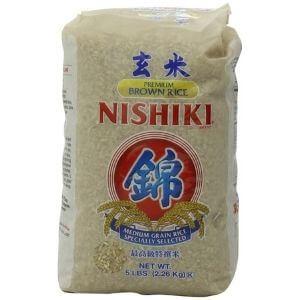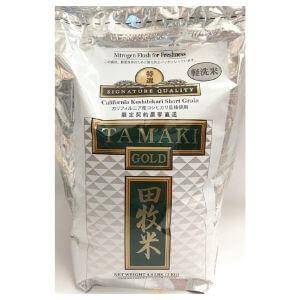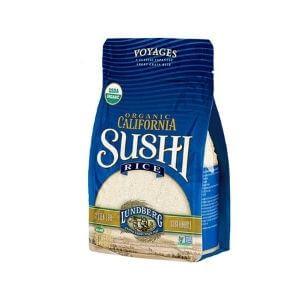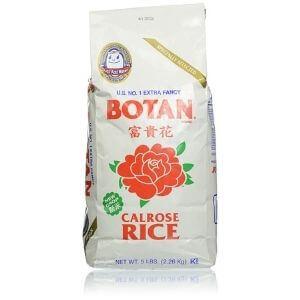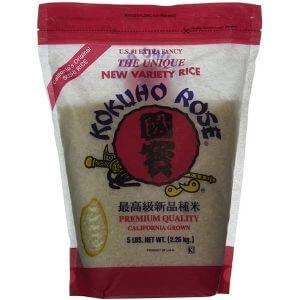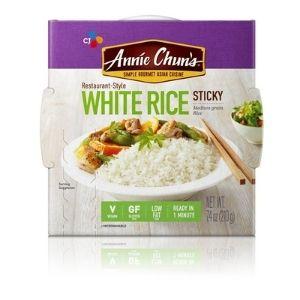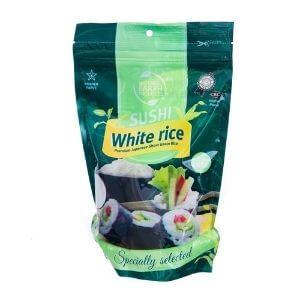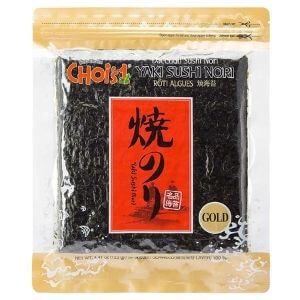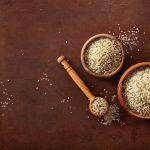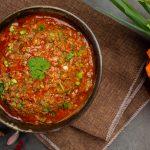Stickiness:
Sushi rice should always be a little sticky. It is this stickiness that helps the rice grains hold on to each other in your sushi. Loose grain, hard rice won’t clump up and form the rolls.
Whichever brand of sushi rice you choose, make sure it is clumpy and sticks together after being cooked. Botan rice and Nishiki have just the right level of stickiness.
Texture:
Along with stickiness, the texture is one of the most important features of sushi rice. Choose a rice with a soft, slightly mushy texture; one that will easily stick together and form the sushi rolls.
A softer rice will be easier to fill with nori and protein. It will also be quicker and easier to roll and cut through. Tamanishiki Super Premium Short Grain Rice and Nishiki Premium Sushi Rice are always good options.
Grain Type:
Always select unpolished short-grain Japanese rice or medium-grain California rice for your sushi. While medium grain will work, many people prefer the use of short grain only. Either way, you can’t really go wrong when making sushi with japonica rice.
Starchiness:
You should rinse your rice several times before cooking. Choose a brand that isn’t known for being very starchy. Overly starchy rice will be too gluey and the rice will be almost liquid and again, won’t form the clumps you need for your sushi.
Lundberg Family Farms Organic Sushi Rice has the perfect level of starch that makes the grains clump together.
Cooking Time:
No one has hours to spend rinsing, soaking, and boiling rice. It is best if you choose a rice that only needs a couple of rinses and a soak time that is no longer than an hour. Nishiki Premium Sushi Rice and Botan Musenmai Calrose Rice are both options with a short cooking time.
Taste:
Your sushi rice should have a mild and pleasant flavor. A strong starchy taste will overpower the taste of the seasoning and other fillings.
Rice with a pleasing flavor will also smell delicate and entice an enjoyable culinary experience. Botan Musenmai Calrose Rice and Lundberg Family Farms Organic Sushi Rice both taste great.
Easy Instructions:
The rice should come with simple and straightforward instructions that you can easily follow. They should also specify instructions for using a rice cooker and a guideline on steaming the rice. Nishiki Premium Sushi Rice is known for being extremely easy to prepare.
Some brands also mention incorrect ratios of water or cook times that need to be altered. It would save you time and energy to pick a brand with accurate instructions for a fragrant pot of rice.
Gluten Content:
If you have allergies or celiac disease, it is important that you select a rice brand with no gluten. Although rice is gluten-free, some brands include corn as an ingredient in sushi rice to fortify it.
Most non-GMO, organic brands like Lundberg Family Farms Organic Sushi Rice and RiceSelect are gluten-free, but it’s always a good idea to check the packaging.
Best by Date:
While many chefs say rice has an indefinite shelf life, it’s best to pick a brand that’s best by date is a few months away. After opening your sushi rice, make sure you store it somewhere dry and dark, in an air-tight container. You can also store it in the fridge to keep it fresh longer.
Frequently Asked Questions (FAQs)
01. Can I Substitute Long-Grain Rice for Sushi Rice?
No, long-grain rice does not have the amount of starch needed to make sticky, clumpy rice. Using long-grain won’t make sushi, because the grains won’t stick together. Long-grain rice also doesn’t have the taste that we associate with sushi.
02. Is Short-Grain Arborio Rice a Sushi Rice Substitute?
Many people have arborio in their pantry and think it can be used as sushi rice in a pinch. This is because arborio and sushi rice have a similar shape and size. Although arborio is also a kind of short-grain rice, it has a much higher starch content than japonica. This makes arborio extremely gluey and glutinous when boiled like sushi rice. It also turns very sticky once cooled.
03. What’s the Best Way to Store Sushi Rice?
Any kind of rice should be stored in airtight containers, either glass or plastic. This is to prevent bugs from getting in. To keep the rice fresh, keep your container in a dry place, away from direct sunlight. If you don’t use the rice frequently, you can store it in the fridge to keep it fresh longer.
04. How Long Does It Take to Cook Sushi Rice?
This differs from brand to brand. Some brands of rice require a shorter soaking time. Many brands call for a 30-minute soak to improve the texture of the end product. On average, your sushi rice should take around 20 minutes to boil. After it has simmered for 20 minutes, reduce the heat to low and let the rice steam for an additional 15 minutes. However, some brands of rice need to be cooked for longer to get the right texture.
05. Can I Skip the Multiple Rinses if I’m in a Hurry?
If you’re using a brand like Nishiki or Tamanishiki Short Grain Rice, you can get away with just one rinse. Most brands do require rinsing properly in running water until the water is no longer cloudy. This might take a couple of minutes. Rice that isn’t rinsed properly will smell and feel starchy and the texture of your sushi rice will be too sticky and glutinous. Properly rinsing your grains can do wonders for both the taste and feel of your sushi rice.
06. How Much Water Should I Use to Cook My Sushi Rice?
The typical ratio of water to rice is 1.2:1. That means you use a little more water compared to rice. For example, if you use 100g of rice to make sushi, boil it in 120ml of water. Some kinds of rice need more water. Lundberg Farm’s Organic Sushi Rice tends to be browner than most conventional sushi rice needs to be boiled in twice the amount of water when compared to the rice.
07. Why is My Rice So Clumpy and Sticky?
If your rice is too mushy to work with, chances are you overcooked it or used too much water. Also, leave your rice uncovered and let it cool after cooking.
Closing Thoughts
Sushi can be a little tricky to get right the first few times. The trick to great sushi lies in the brand of rice and the cooking techniques you use. This article walks you through both; how to pick the best sushi rice brand for your needs and how to prepare it.
All that remains is a little experimentation and tweaking the recipes to your taste. Once you get going, you’ll be able to effortlessly assemble gorgeous rolls of sushi, whether they’re maki, uramaki or even temaki cones.
Sushi is totally worth the time and effort; whip up a dish of colorful rolls and you can impress the harshest food critic. Happy cooking!
More Related Product Reviews:
